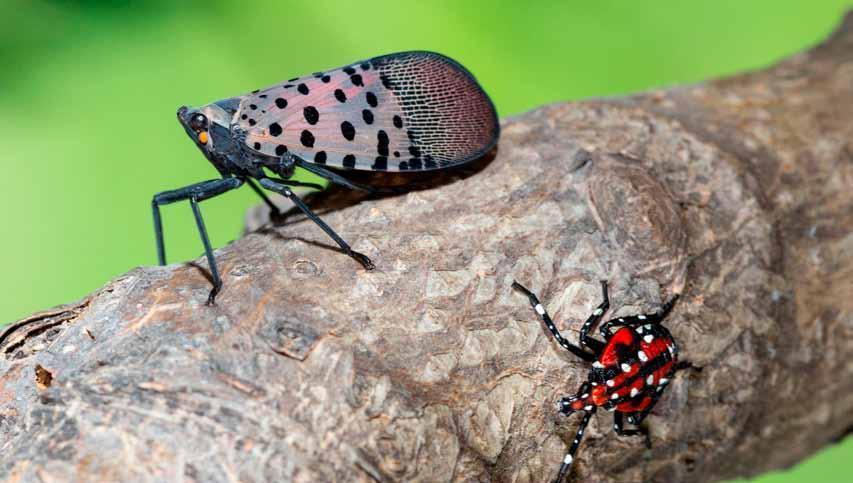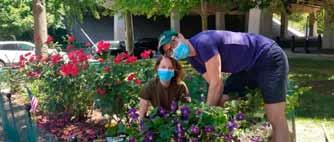the commons
Spotted Lanternfly Spotted lanternflies can be found on trees all over Queen Village, South Philadelphia and beyond, but do you know how they got here or what their lifecycle looks like? by Meredith Piotrowski
T
he Pennsylvania Department of Agriculture identified the Spotted Lanternfly as a threat shortly after it was first seen in the Keystone State in 2014. Native to Asia, it targets cultivated grapes, fruit trees, and hardwood trees. Eradication in the early stage of its life cycle is crucial. Lanternflies spend winter here in egg masses on everything from bark and stone, to flat surfaces including yard furniture and cars. To the casual observer,
Queen Village Quarterly Crier \\ FALL 2020
these egg masses can be mistaken for a clump of mud. In the next stage they emerge from their eggs in May, with a second molting in late May. Still wingless at this point, they can only crawl or jump. The adult lanternfly usually appears around July, seeking out food sources from September through December in order to double in size for egg-laying. Lanternflies feed on native species, including willows, maples, poplars, birch and ash, many of which are found lining
the streets of Philadelphia. Damage to trees appears as “wounds,” weeping with sap, and sooty fungal growth at the base of the tree—telltale signs that a tree’s life is in danger. The PA Department of Agriculture received a $5+ million grant to study and control spotted lanternfly populations. If you would like to make a report, visit services.agriculture.pa.gov/SLFReport and help stave off the impacts of the lanternfly, and save our local tree treasures. ■












